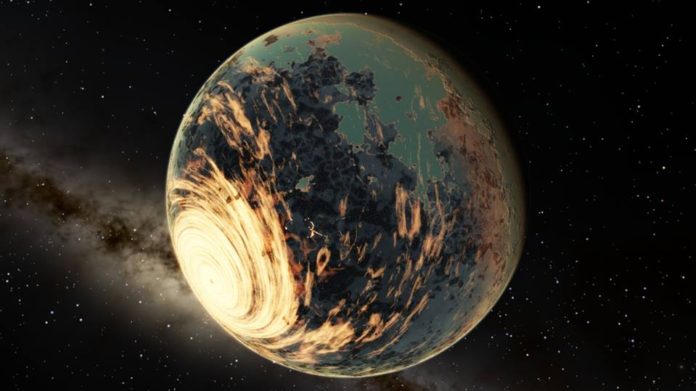K2 is the given to the follow-up mission to NASA’s Kepler Space Telescope. Upon analyzing data retrieved from the mission, scientists discovered nearly 80 new exoplanet candidates. One that stood out, in particular, is a potential planet that orbits a star known as HD 73344. And if confirmed, would be the brightest planet host yet to have been detected by the K2 mission.
It’s estimated that the planet is around 2.5 times that of the Earth and takes around 15 days for it to orbit HD 73344. It’s also a very hot planet with average temperatures ranging from 1,200 to 1,300 Celsius (approx. 2,000 degrees Fahrenheit). In terms of location, it sits around 114 light years from our own planet. This is close enough for scientists to see it as the perfect candidate for further studies in which to determine its atmospheric composition among other characteristics.
Ian Crossfield is an assistant professor of physics at MIT and co-leader of the study. He believes it’s probably more likely a smaller, hotter Neptune or Uranus. As well as the significant number of exoplanets discovered, the analysis has also been praised for the amount of time in which it took to complete. Using existing tools developed at MIT, the researchers were able to quickly identify the new exoplanet candidates. And just weeks after the completion of the mission, that information was made public. Usually, that kind of analysis takes months, if not years to complete.
Using such a fast planet-search allows astronomers to follow-up their findings with ground-based telescopes much faster than normal. This gives them a better chance of seeing the planetary candidates before the Earth moves on past. “When the TESS data come down, there’ll be a few months before all of the stars that TESS looked at for that month ‘set’ for the year,” says Crossfield. “If we get candidates out quickly to the community, everyone can start immediately observing systems discovered by TESS, and do a lot of great planetary science.”
In each campaign K2 takes part in, one patch of the sky is observed for a total of 80 days. The campaigns analyzed by the team were C16 and C17, K2’s 16th and 17th observation campaigns. These campaigns are both forward-facing, meaning that K2 observed those stars that sat in front of the telescope and were within the Earth’s field of view. Crossfield, co-author of the study Liang Yu, and others seized this moment to accelerate the usual analysis of K2 data.
During the C16 campaign, 20,647 stars were observed by K2 between Dec 7, 2017, and Feb 25, 2018. Just three days later, on Feb 28, the data was released to all within the astronomy community. Using algorithms, Yu and Crossfield whittled down the 20,000+ stars to just 1,000 that were of real interest. Then, after further analysis, they managed to pick out just 30 planet candidates that were of the highest quality and whose periodic signatures were most likely caused by transiting planets.
A similar number of planetary candidates were also identified in the C17 analysis. As well as these, the researchers also identified hundreds of potential signatures of various astrophysical phenomena such as pulsating stars or supernovae. And while stars don’t typically change too much over the course of just one year, Crossfield says when it comes to doing a follow-up visit the sooner the better. “You want to observe [candidates] again relatively soon so you don’t lose the transit altogether,” he says. “You might be able to say, ‘I know there’s a planet around that star, but I’m no longer at all certain when the transits will happen.’ That’s another motivation for following these things up more quickly.”
Since the publishing of the team’s results, four candidates have been confirmed as definitely being exoplanets. The researchers have also been studying other potential candidates, including the possible planet found to be orbiting HD 73344. Crossfield says the speed in which this planetary candidate was detected along with the brightness of the star, will make it much easier for astronomers to hone in on even more specific characteristics of the system.
“We found one of the most exciting planets that K2 has found in its entire mission, and we did it more rapidly than any effort has done before,” says Crossfield. “This is showing the path forward for how the TESS mission is going to do the same thing in spades, all over the entire sky, for the next several years.”
More News to Read
- UCLA Scientists Report Their Deepest Understanding Yet of the Enzyme Telomerase
- The World’s Most Sensitive Experiment for Dark Matter is Now Underway
- On the Hunt for Clandestine Nuclear Weapon Sites
- Without Teamwork, There will be No Colonizing on Mars
- Engineers Develop A New Cloaking Material That Can Hide Hot Objects

